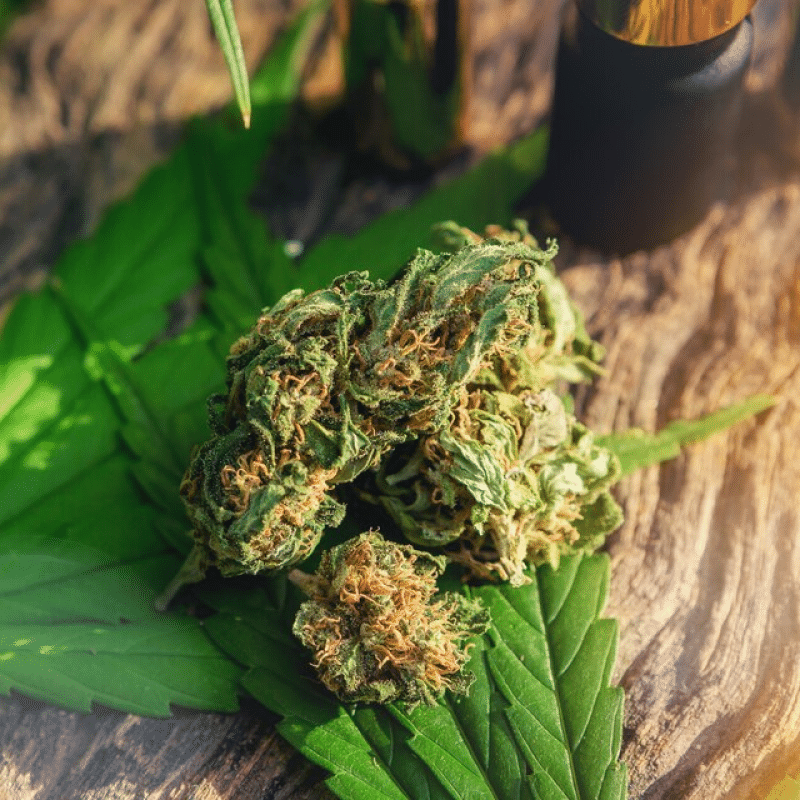Active vs. Inactive Cannabis License: Is California Overregulated?
Explore the striking shift in California’s cannabis market, where inactive licenses now outnumber active ones. This section delves into what constitutes active versus inactive licenses, revealing how overregulation, financial burdens, and fierce competition are impacting businesses, particularly smaller operators. We’ll also examine the associated risks and crucial insurance and risk management strategies for navigating this challenging landscape.

Article Summary
- Defining Active and Inactive Cannabis Licenses in California
- The Current Landscape: Is California's Cannabis Industry Overregulated?
- Risks Associated with Active and Inactive License Status
- Insurance and Risk Management Considerations for License Status
- Navigating the California Cannabis Landscape: What Can Leaders Do?
For the first time in California’s cannabis history, inactive licenses outnumber active licenses. Is this a sign of troubled times in the largest cannabis market in the world, or indicative of a larger issue in California? We explore the surprising SFGate report and examine what it means for the California cannabis industry.
Defining Active and Inactive Cannabis Licenses in California
California’s legal cannabis market is a complex landscape, governed by a sophisticated licensing system designed to regulate every aspect of the industry from cultivation to retail. Understanding the distinction between active and inactive cannabis licenses is crucial for grasping the current state of this evolving market.
Active Cannabis License
An active license is one that is currently being used to run a business: all administrative fees are paid, regulations complied with, and business operations happen daily. There are over three dozen license types in California, and often multiple licenses are needed to run a cultivation facility, a manufacturing business, to distribute cannabis products, or to sell them.
The SFGate article reports that as of February 2025, there were 8,514 active cannabis licenses in California. These businesses must take action to maintain their good standing, including regular compliance audits, paying renewal fees, and complying with Metric reporting requirements.
Inactive Cannabis License
There are now over 10,000 inactive cannabis licenses in California: 10,828.
An inactive cannabis license is one that is not currently being used to run a business. Licenses can go inactive for several reasons, such as awaiting renewal or being temporarily suspended makes a license inactive, as does a business pausing or consolidating operations. And in California, a regulatory change from 2023 accounted for over 1,000 inactive licenses because it allowed business consolidation.
Still, that leaves over 9,000 licenses issued by the Department of Cannabis Control inactive for other reasons. A license may need to become inactive if an operator runs into financial difficulties that are all too common in this industry, regulatory violations, or supply chain issues. An inactive license is not allowed to “engage in commercial cannabis activity” or plant-touching matters.
The Current Landscape: Is California's Cannabis Industry Overregulated?
A majority of the inactive licenses in California are for cultivation facilities: over 7,000 inactive cannabis cultivation licenses.
Regulation of this market has given a major advantage to larger cannabis companies capable of large-scale production for cannabis products, many of which are located in Southern California. Smaller farms that were once the backbone of the industry are impossibly overtaxed and regulated, making profitable business growing cannabis nearly impossible. The hardest hit farms are in Northern California, within the Emerald Triangle.
Additional inactive license type includes:
- 1,100 inactive distribution licenses
- Nearly 500 inactive delivery licenses
- Over 300 inactive retail licenses
There are many reasons that a license may go inactive, as many challenges as cannabis operators face. When the problems pile up high enough, any one may be the crushing blow.
Regulatory Challenges for California Cannabis
California state law and the Department of Cannabis Control have placed an immense financial strain on cannabis businesses. It is incredibly expensive to maintain a license here: the cost of doing business is already high compared to many other states in the US, and the additional burden of administrative fees, license renewals, high rate of state taxation, and the federal policy of 280E can make a profit margin impossible. Combine that with limited access to banking and capital, and you have a recipe for disaster.
California cannabis regulators are infamous for changing minor regulations with major impact. Evolving regulations that focus on minutia cause business headaches and can increase costs, making compliance an expensive challenge. When a business has to throw out all of the packaging it’s invested in because state lawmakers have changed the regulations slightly, it’s a huge blow to small operators. It also gives larger businesses an unfair competitive advantage that increases the existing competitive pressure that cannabis businesses face in California.
Despite California holding the largest legal market in the world, retail sales are still not allowed in every jurisdiction. Local bans on cannabis dispensaries create a patchwork of access to the legal market and regulatory red tape.
It’s important to keep in mind that over 10,000 inactive licenses does not mean 10,000 failed businesses. Some licenses are inactive because they were consolidated with other licensed operators. But the sad reality is, many inactive licenses are the result of business failure.
Is the Unlicensed Market to Blame?
Many people place the blame for struggling businesses on the illicit market in California. Let’s be clear here — California has a thriving illicit market for cannabis products because of the overregulations that are driving smaller operators to shutter their businesses. When it’s cheaper for both the cultivator and the consumer to do things outside of state law, there’s a larger problem at play.
Additionally, when there are repeated scandals of testing laboratories falsifying THC content or finding banned pesticides, this weakens public trust in the legal market and opens the door for people who grow cannabis in the illicit market.
The unlicensed market is not solely to blame for the number of inactive cannabis licenses — it’s a side effect of the same problem. The desire of state agencies to squeeze as much money out of the cannabis industry as possible is responsible for the state of overregulation currently hurting California cannabis and, ultimately, public health. Were California’s cannabis industry left alone in the same way that other farming operations are, operators who grow cannabis could be thriving, and the unlicensed market struggling.
Start protecting your cannabis business
Risks Associated with Active and Inactive License Status
Both active and inactive cannabis licenses in California present unique challenges and considerations. While operating a cannabis business entails inherent industry-specific risks, simply holding an inactive license also carries significant — though different — risks related to market re-entry, regulatory deadlines, and ongoing financial obligations.
Risks of Maintaining an Active Cannabis License
Holding a cannabis license comes with risks. There are some risks that are inherent to running a business, like general liability and the potential need for workers’ comp. But there are also risks that are specific to the cannabis industry, like the risk of crop failure or regulatory changes at the state or federal level.
Risks of Holding an Inactive License
Holding an inactive cannabis license brings about a different set of risks. While licenses can be reactivated, the time that passes decreases a business’s market share. In a competitive market like California, being forgotten by consumers can make a successful reentry challenging. There is also a time limit on how a license can remain inactive before it gets revoked, which should be discussed with a legal professional.
If a business wants to maintain an inactive cannabis license, there are still costs involved. Renewal fees are necessary to keep a license in good standing, even if business operations are paused. Maintaining business insurance may also be necessary to keep a license, but the policies required to protect an inactive license may be different than your current suite of coverage.
Insurance and Risk Management Considerations for License Status
For both active and inactive cannabis licenses in California, strategic insurance and risk management are paramount. Effective risk management, including financial planning and compliance, is crucial for all licensed operators to mitigate common industry pitfalls.
Active License Insurance
The proper umbrella of insurance coverage provides a safety net for cannabis businesses. Every business has a unique set of needs, but there are a few policies that are best practices for all businesses to have.
- General Liability: Protects cannabis companies against basic business risks.
- Product Liability: Protects against claims alleging your cannabis products or services caused injury or damage
- Commercial Property: Protects against loss of physical assets due to a variety of risks
- Crop Insurance: Protects against the loss of cannabis crops due to peril
There are many factors that influence your insurance cost: a record of compliance and a license in good standing may help influence insurance rates and availability.
Inactive Cannabis License Insurance
Even when cannabis licenses are inactive, cannabis insurance can help protect your investment and bottom line. Maintaining coverage like General and Product Liability helps protect your business and your license from potential lawsuits. However, holding an inactive license for a length of time may have a negative impact on your ability to renew insurance policies, may change your insurance rates, or your reinstatement requirements.
Risk Management for Cannabis Businesses and Licensed Operators
One of the biggest challenges that leads to inactive licenses in California is financial distress. In an industry with tight margins, robust financial planning, tracking, and management are vital to avoiding prolonged distress. Financial audits and identifying areas that can be automated are a good place to start.
Noncompliance can lead to financial challenges, making proactive compliance measures an important piece of business success. In addition to financial burden, noncompliance can lead to license suspension and revocation, which makes a cannabis license inactive.
Finally, unexpected events happen. What contingency plans does your business have in place to weather any storms or address potential disruptions that could lead to temporary license inactivity? How can you pivot if there are unexpected changes to the cannabis supply chain?



